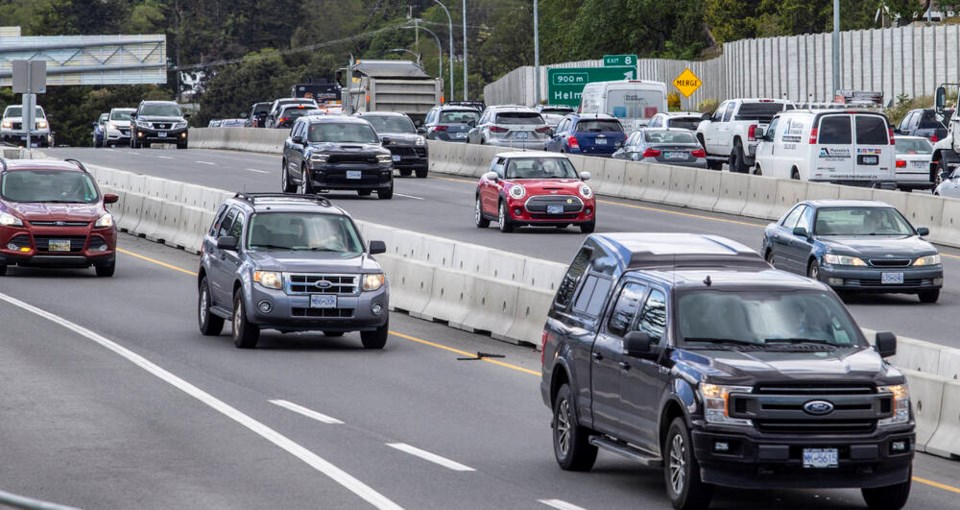Some pet peeves to talk about this week.
First up is for those who like making a left turn over a solid line or double solid line while blocking a line of cars behind you. You can’t do that.
The Motor Vehicle Act is admittedly a little hazy on this one, saying you cannot unreasonably obstruct traffic while trying to make a left hand turn over solid lines. Naturally, one person’s unreasonable is another person’s “Chill out, I’ll be able to turn in a minute.”
If it’s a busy road, check behind you first to see if there is a line of cars before turning over solid lines. If there’s two or more - go around the block and consider approaching from the other direction. A right hand turn is easier and upsets far fewer people.
Next is the left turn denier. They enter a left turn lane at the end of a line of cars but don’t make it in time to complete that left turn with the advanced arrow. They then wait for the next advanced left turn light even though they can easily turn left because there’s no opposing traffic. Why?
To be clear I’m not talking about an advanced left turn lane with its own separate green, yellow, red signal light. Of course you have to wait for the next advanced green there.
I’m talking about the overhead signal lights which control the entire intersection but have an advanced left turn signal as part of their setup.
Whether it’s a lack of understanding or confidence in driving ability isn’t clear. But know that there are people behind you who are maddened by you just sitting there.
Finally we have the slow driver.
I’ll probably be challenged about this one, because I’m always highlighting the dangers of speeding. But doing 10 to 15 km/h below the speed limit when traffic and road conditions don’t warrant it drives other drivers bonkers — especially on a main drag.
Drivers who maneuver quickly out of frustration to get by someone driving too slowly create risks. A defensive driver should be constantly assessing the impacts of their driving on the vehicles around them.
If you are constantly being tailgated and honked at, check your speed and be aware of the speed limit in which you are driving.
If you feel you can’t operate your vehicle at a required speed perhaps it’s time to have a conversation with a trusted person and ask them what they think about your driving ability overall.
If you’re driving slow deliberately to make others “conform” and show them who’s boss — stop it — now. You’re not the hallway monitor. You are actually making things worse on the road for the rest of us.
To be clear, I’m talking about perfect road driving conditions where driving the speed limit is prudent and safe.
However, if you’re driving normally and it’s a case of an aggressive driver or road rager behind you, pull over or change lanes and let them go. They always lose in the end.
Little actions which keep frustrations down and traffic flowing are essential on our crowded streets. So please assess how you might be impacting others as you drive.
Glove Box: This past week has been Nation Teen Driver Safety Week — who knew? There has to be way more emphasis on this issue than it has been receiving in past years. The death of a young person is one of the most tragic events in society and it’s up to all adults to preach loud and clear about the dangers of being a teen behind the wheel.
Have a conversation with the teens in your life about driving. They are in the most dangerous age category for drivers.
Here are the leading causes of teen driving deaths and injuries:
• Distraction — driving requires 100% concentration. Anything taking your eyes and mind off the road increases the chance of crashing.
• Impairment — a disturbing number of teens admit in polls they have driven after taking drugs and or alcohol, or they have accepted a ride from a driver who has imbibed.
• Speeding — the lack of experience around “over driving” a vehicle’s capability or not understanding how speed magnifies all other factors in a crash scenario, is a leading cause of teen injury and death.
• Passengers — B.C.’s graduated licensing program strictly controls the number of passengers a new driver can take on-board for good reason. Passengers in your car create their own particular form of distracted driving. Research shows that the likelihood of a teen driver engaging in risky behaviour triples when there are multiple passengers in a vehicle.
It’s never too late to have “the talk” about driving — and keep on having it no matter how much eye rolling you have to deal with.



